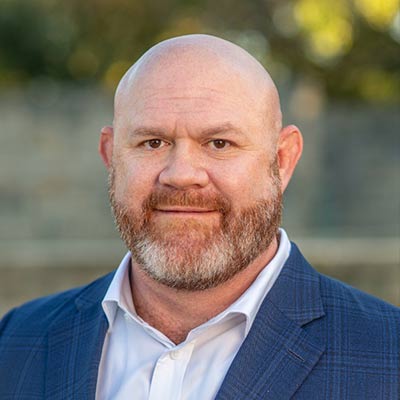Introduction
In the rapidly evolving world of cybersecurity, keeping systems updated through patching is not just a best practice—it is a necessity. System patches are updates that fix vulnerabilities, enhance functionality, and optimize the performance of software and operating systems. This article explores why system patching is critical, the risks of neglecting it, and best practices for maintaining updated systems.
Microsoft’s recent patch release, which addressed over 60 vulnerabilities in Windows, including a zero-day vulnerability actively being exploited, underscores the urgent need for robust patch management. The patched vulnerabilities range from remote code execution flaws to privilege escalation, all of which pose significant security risks. Notably, the zero-day vulnerability had been exploited to execute malicious code and gain higher privileges on the affected systems. This situation highlights the relentless nature of cyber threats and the critical importance of maintaining up-to-date systems. Organizations must heed these developments and accelerate their patch management processes to safeguard against similar vulnerabilities. Proactively addressing such vulnerabilities through timely updates is not just a defensive measure but a strategic imperative to ensure operational continuity and security resilience.
Understanding the Importance of Patching
1. Security Enhancement:
The primary purpose of patching is to correct security flaws. Hackers and cybercriminals constantly scan systems for vulnerabilities that can be exploited. Once a vulnerability is known, the race begins between those trying to exploit it and those trying to patch it. Applying patches promptly ensures that these vulnerabilities are closed before they can be exploited.
2. Compliance and Trust:
Various regulatory frameworks, such as GDPR, HIPAA, and PCI DSS, require that systems be kept up-to-date to safeguard sensitive information. Failure to comply can result in severe penalties, loss of customer trust, and damage to reputation. Patching is a visible indicator to clients and partners that a company prioritizes cybersecurity.
3. System Stability and Performance:
Patches often include improvements that enhance the stability and performance of systems. These can reduce software crashes and improve the efficiency of IT operations, leading to better user experience and increased productivity.
The Risks of Ignoring Patching
1. Increased Breach Potential:
Unpatched systems are low-hanging fruit for attackers. The longer a system remains unpatched, the more susceptible it is to cyberattacks. For instance, the WannaCry ransomware attack exploited unpatched Windows systems, affecting thousands of organizations worldwide.
2. Operational Disruptions:
Cyberattacks resulting from unpatched vulnerabilities can lead to significant operational disruptions. Recovery from such incidents not only is costly but also diverts resources from other critical business activities.
3. Legal and Financial Repercussions:
Beyond operational impacts, there are legal and financial consequences to consider. Data breaches can lead to lawsuits, regulatory fines, and loss of intellectual property or sensitive customer data, all of which can be devastating.
Best Practices for Effective Patch Management
1. Establish a Patch Management Policy:
Organizations should develop and enforce a patch management policy that outlines the procedures for regular system reviews and the timely application of patches. This policy should prioritize patches based on the severity of the vulnerabilities they fix.
2. Automate Patch Management:
Automation tools can help streamline the patching process, reduce the likelihood of human error, and ensure patches are applied as soon as they are released. Automation is particularly crucial in environments with extensive IT infrastructure.
3. Regular Audits and Assessments:
Conduct regular security audits and vulnerability assessments to identify and remediate unpatched systems. This proactive approach can significantly reduce the attack surface of an organization.
4. Educate and Train Staff:
Ensure that all employees understand the importance of patching and are aware of the patch management policies. Training can help foster a culture of security awareness within the organization.
5. Monitor and Refine:
Monitor usage patterns and refine authentication methods to ensure maximum protection with minimal disruption.
Conclusion
Patching is a critical component of a robust cybersecurity strategy. It not only closes doors to potential threats but also ensures compliance with legal standards, enhances system performance, and upholds a company’s reputation as a secure and reliable entity. Organizations that proactively manage their patching processes are better equipped to protect themselves against the ever-present threat of cyberattacks. In the context of services like Insider Direct, the integration of strategic cybersecurity consulting with direct procurement advantages ensures that organizations are not only advised on the best practices but are also equipped with the tools they need at optimal costs, making cybersecurity both effective and efficient.
Get in touch with us
Secutor Cybersecurity is a trusted partner comprised of industry leading experts in the fields of Cybersecurity and Governance, Risk and Compliance. We partner with our clients to deliver on-demand solutions tailored to expertly navigate the regulatory demands of their specific industries.
Our proven track record of successfully exceeding client expectations is achieved through the combination of our methodical approach, advanced technologies, subject matter experts, and synergy with client team members.
Secutor is your team of world-class problem solvers with vast expertise and experience delivering complete solutions keeping your organization protected, audit-ready, and running smoothly.







